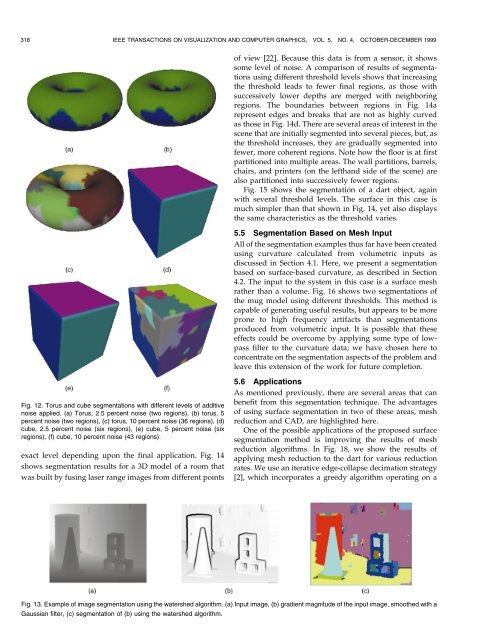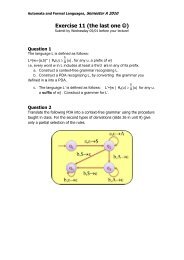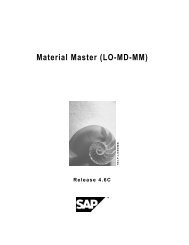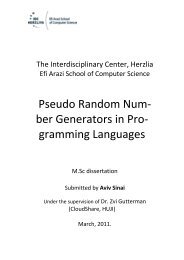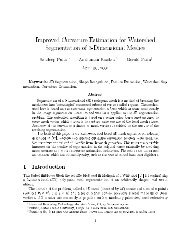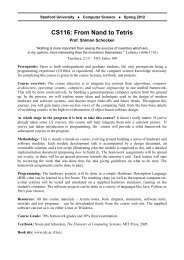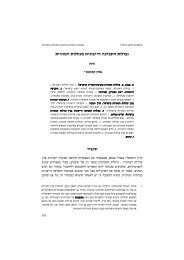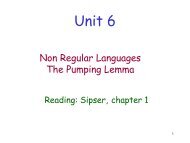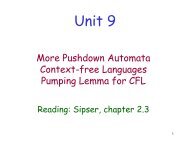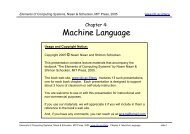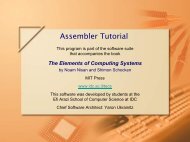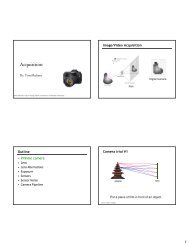Partitioning 3D Surface Meshes Using Watershed Segmentation
Partitioning 3D Surface Meshes Using Watershed Segmentation
Partitioning 3D Surface Meshes Using Watershed Segmentation
You also want an ePaper? Increase the reach of your titles
YUMPU automatically turns print PDFs into web optimized ePapers that Google loves.
318 IEEE TRANSACTIONS ON VISUALIZATION AND COMPUTER GRAPHICS, VOL. 5, NO. 4, OCTOBER-DECEMBER 1999<br />
of view [22]. Because this data is from a sensor, it shows<br />
some level of noise. A comparison of results of segmentations<br />
using different threshold levels shows that increasing<br />
the threshold leads to fewer final regions, as those with<br />
successively lower depths are merged with neighboring<br />
regions. The boundaries between regions in Fig. 14a<br />
represent edges and breaks that are not as highly curved<br />
as those in Fig. 14d. There are several areas of interest in the<br />
scene that are initially segmented into several pieces, but, as<br />
the threshold increases, they are gradually segmented into<br />
fewer, more coherent regions. Note how the floor is at first<br />
partitioned into multiple areas. The wall partitions, barrels,<br />
chairs, and printers (on the lefthand side of the scene) are<br />
also partitioned into successively fewer regions.<br />
Fig. 15 shows the segmentation of a dart object, again<br />
with several threshold levels. The surface in this case is<br />
much simpler than that shown in Fig. 14, yet also displays<br />
the same characteristics as the threshold varies.<br />
5.5 <strong>Segmentation</strong> Based on Mesh Input<br />
All of the segmentation examples thus far have been created<br />
using curvature calculated from volumetric inputs as<br />
discussed in Section 4.1. Here, we present a segmentation<br />
based on surface-based curvature, as described in Section<br />
4.2. The input to the system in this case is a surface mesh<br />
rather than a volume. Fig. 16 shows two segmentations of<br />
the mug model using different thresholds. This method is<br />
capable of generating useful results, but appears to be more<br />
prone to high frequency artifacts than segmentations<br />
produced from volumetric input. It is possible that these<br />
effects could be overcome by applying some type of lowpass<br />
filter to the curvature data; we have chosen here to<br />
concentrate on the segmentation aspects of the problem and<br />
leave this extension of the work for future completion.<br />
Fig. 12. Torus and cube segmentations with different levels of additive<br />
noise applied. (a) Torus, 2.5 percent noise (two regions), (b) torus, 5<br />
percent noise (two regions), (c) torus, 10 percent noise (36 regions), (d)<br />
cube, 2.5 percent noise (six regions), (e) cube, 5 percent noise (six<br />
regions), (f) cube, 10 percent noise (43 regions).<br />
exact level depending upon the final application. Fig. 14<br />
shows segmentation results for a <strong>3D</strong> model of a room that<br />
was built by fusing laser range images from different points<br />
5.6 Applications<br />
As mentioned previously, there are several areas that can<br />
benefit from this segmentation technique. The advantages<br />
of using surface segmentation in two of these areas, mesh<br />
reduction and CAD, are highlighted here.<br />
One of the possible applications of the proposed surface<br />
segmentation method is improving the results of mesh<br />
reduction algorithms. In Fig. 18, we show the results of<br />
applying mesh reduction to the dart for various reduction<br />
rates. We use an iterative edge-collapse decimation strategy<br />
[2], which incorporates a greedy algorithm operating on a<br />
Fig. 13. Example of image segmentation using the watershed algorithm. (a) Input image, (b) gradient magnitude of the input image, smoothed with a<br />
Gaussian filter, (c) segmentation of (b) using the watershed algorithm.


